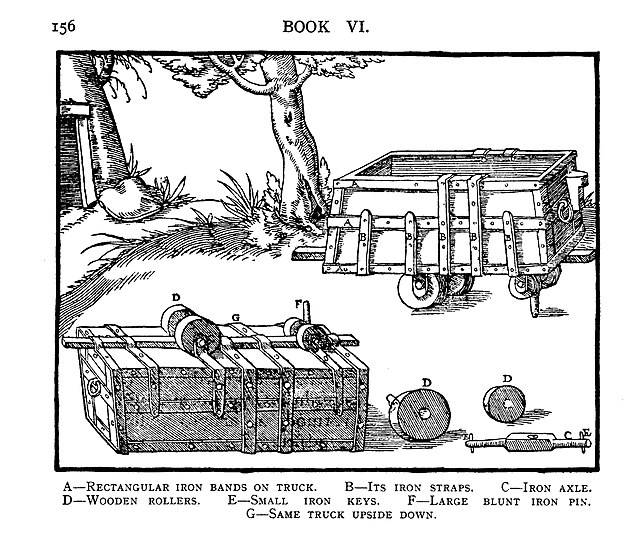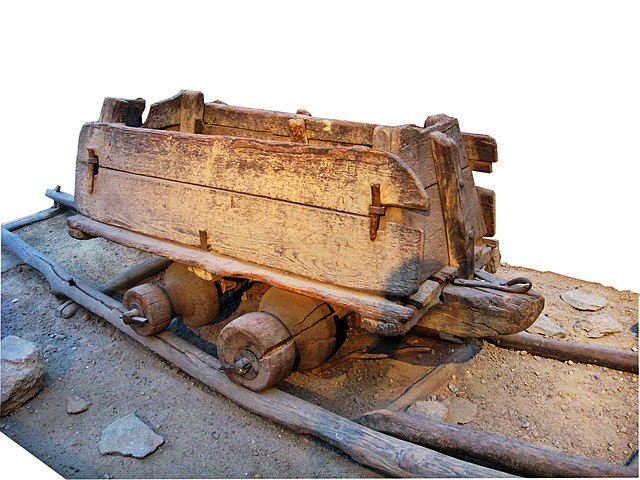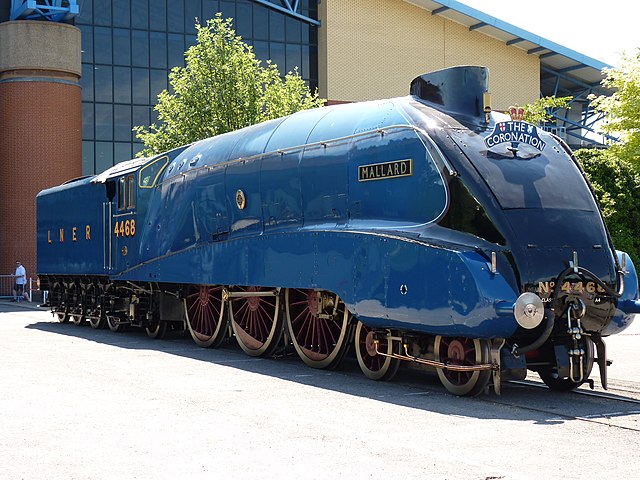Wagonways, also known as horse-drawn railways and horse-drawn railroad consisted of the horses, equipment and tracks used for hauling wagons, which preceded steam-powered railways. The terms plateway, tramway, dramway, were used. The advantage of wagonways was that far bigger loads could be transported with the same power.
Benjamin Outram's Little Eaton Gangway in July 1908 with the last train of loaded coal wagons arriving.
Minecart shown in De Re Metallica (1556). The guide pin fits in a groove between two wooden planks.
Minecart from 16th century, found in Transylvania
A replica of a "Little Eaton Tramway" wagon, the tracks are plateways
A steam locomotive is a locomotive that provides the force to move itself and other vehicles by means of the expansion of steam. It is fuelled by burning combustible material to heat water in the locomotive's boiler to the point where it becomes gaseous and its volume increases 1,700 times. Functionally, it is a steam engine on wheels.
LNER Class A4 4468 Mallard is officially the fastest steam locomotive, reaching 126 mph (203 km/h) on 3 July 1938.
LNER Class A3 4472 Flying Scotsman was the first steam locomotive to officially reach 100 mph (160 km/h), on 30 November 1934.
The Salamanca locomotive
The Locomotion at Darlington Railway Centre and Museum








